Historical Metal-on-Metal Joints
Lessons Learned from Historical Metal-on-Metal THRs
Seven surgeons at Birmingham's Royal Orthopaedic Hospital carried out metal on metal total hip replacements (THRs) of McKee, Ring and Stanmore types between 1966 and 1987.
It could not go unnoticed in our clinical follow up practice that these patient's hips were performing exceptionally well and in particular there was a notable absence of osteolysis associated with the majority of these implants. Young active patients whose implants remained secure had no osteolysis.
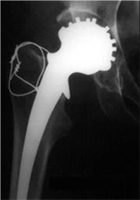

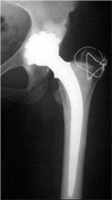
In patients whose implants loosened, however, cement debris was generated and in these, hips' cement debris did cause osteolysis just as badly as polyethylene debris.
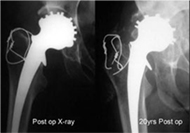
Severe pelvic osteolysis.
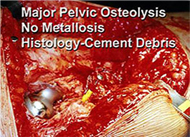
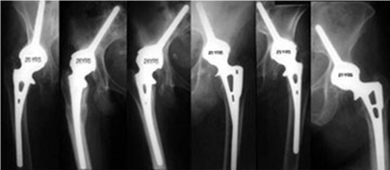
The most interesting patients were those who had the uncemented metal on metal Ring THR. We have never seen a case of osteolysis associated with this implant. As can be seen, many of these implants were inserted in positions that would not be accepted today but the key feature of note is that although these implants have been in situ for a minimum of twenty years, no patient has osteolysis.
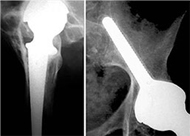
and acetabular components
This is all the more remarkable because these smooth chrome cobalt implants had soft tissue at the bone implant. It is regular experience to see patients with an open interface develop osteolysis as a result of polyethylene debris ingress, but despite the open interfaces present on all of these radiographs not a single patient developed osteolysis.
This led us to the conclusion that in the absence of other debris, a metal on metal bearing does not cause osteolysis over a twenty-year period.
© 2007 Smith & Nephew